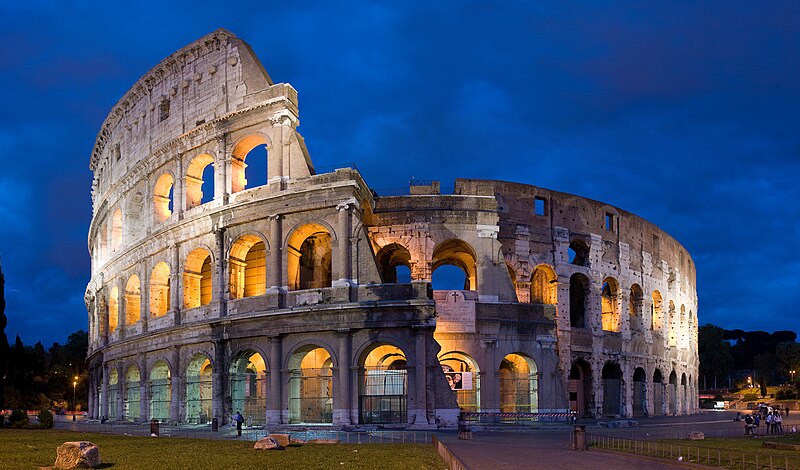Ancient Roman architecture adopted certain aspects of Ancient Greek architecture, creating a new architectural style. The Romans were indebted to their Etruscan neighbors and forefathers who supplied them with a wealth of knowledge essential for future architectural solutions, such as hydraulics
and in the construction of arches. Later they absorbed Greek and
Phoenician influence, apparent in many aspects closely related to
architecture; for example, this can be seen in the introduction and use
of the Triclinium in Roman villas as a place and manner of dining.
The Roman use of the arch and their improvements in the use of concrete and bricks facilitated the building of the many aqueducts throughout the empire, such as the Aqueduct of Segovia and the eleven aqueducts in Rome itself, such as Aqua Claudia and Anio Novus. The same idea produced numerous bridges, such as the still used bridge at Mérida.
The dome permitted construction of vaulted ceilings and provided large covered public space such as the public baths and basilicas. The Romans based much of their architecture on the dome, such as Hadrian's Pantheon in the city of Rome, the Baths of Diocletian and the Baths of Caracalla.
Art historians such as Gottfried Richter in the 1920s identified the Roman architectural innovation as being the Triumphal Arch. This symbol of power on earth was transformed and utilised within the Christian basilicas when the Roman Empire of the West was on its last legs: The arch was set before the altar to symbolize the triumph of Christ and the after life. The arch is seen in aqueducts, especially in the many surviving examples, such as the Pont du Gard, the aqueduct at Segovia and the remains of the Aqueducts of Rome itself. Their survival is testimony to the durability of their materials and design.
The Romans first adopted the arch from the Greeks, and implemented it in their own building. An arch is a very strong shape as no single spot holds all the weight and is still used in architecture today.
The Roman use of the arch and their improvements in the use of concrete and bricks facilitated the building of the many aqueducts throughout the empire, such as the Aqueduct of Segovia and the eleven aqueducts in Rome itself, such as Aqua Claudia and Anio Novus. The same idea produced numerous bridges, such as the still used bridge at Mérida.
The dome permitted construction of vaulted ceilings and provided large covered public space such as the public baths and basilicas. The Romans based much of their architecture on the dome, such as Hadrian's Pantheon in the city of Rome, the Baths of Diocletian and the Baths of Caracalla.
Art historians such as Gottfried Richter in the 1920s identified the Roman architectural innovation as being the Triumphal Arch. This symbol of power on earth was transformed and utilised within the Christian basilicas when the Roman Empire of the West was on its last legs: The arch was set before the altar to symbolize the triumph of Christ and the after life. The arch is seen in aqueducts, especially in the many surviving examples, such as the Pont du Gard, the aqueduct at Segovia and the remains of the Aqueducts of Rome itself. Their survival is testimony to the durability of their materials and design.
The Romans first adopted the arch from the Greeks, and implemented it in their own building. An arch is a very strong shape as no single spot holds all the weight and is still used in architecture today.

No comments:
Post a Comment